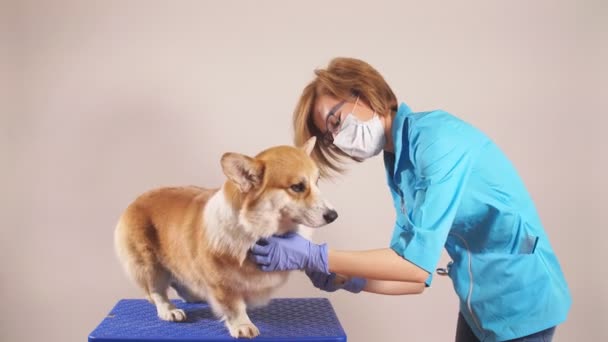High pressure in dogs and cats: causes, symptoms, how to measure
 Hypertension is primary due to the pathology of the vessels themselves (idiopathic or essential) and secondary, which arose against the background of problems from some organ or system (for example, kidneys or the hormonal system), and sometimes can occur due to the use of certain drugs. Secondary hypertension in cats and dogs is more common than primary.Hypertension often develops in animals of older age groups (after 6-7 years).
Hypertension is primary due to the pathology of the vessels themselves (idiopathic or essential) and secondary, which arose against the background of problems from some organ or system (for example, kidneys or the hormonal system), and sometimes can occur due to the use of certain drugs. Secondary hypertension in cats and dogs is more common than primary.Hypertension often develops in animals of older age groups (after 6-7 years).
How is pressure in dogs and cats regulated and why does hypertension occur?
Blood pressure (BP) depends on two quantities: the volume of blood that the heart pumps per unit of time (varies depending on the heart rate and the amount of cardiac output) and the total vascular resistance (elasticity of the vascular walls).
Simply put, the pressure of a fluid in any pipe system is regulated by the pumped volume of the fluid itself and the diameter of the pipes through which it flows. Increasing the volume of liquid and / or reducing the lumen of the tube (vessel) leads to an increase in pressure.
The mechanisms for regulating blood pressure are complex. Normally, the relative constancy of blood pressure is maintained by the coordinated work of the nervous (central and peripheral) and hormonal systems.
One of the main organs that affect blood pressure is the kidneys. The kidneys perform several functions to help regulate blood pressure: these are the filtration of salts and water, and also take part in the work of the renin-angiotensin-ald-sided system (RAAS).
One of the endocrine glands affecting blood pressure is the adrenal glands (due to catecholamines and aldosterone).
Scheme of the renin-angiotensin-ald side system (RAAS)
An example of participation of the nervous system in the process of regulating blood pressure is shown in the figure below: impulses from baroreceptors (which respond to changes in pressure and are located in vessels) are sent to the central nervous system to the centers processing impulses (vasomotor) and returned to the efferent nerve fiber to receptors / tissues / organs responsible for pressure change.
Scheme of the participation of the nervous system in the regulation of blood pressure
The main mechanisms leading to the development of hypertension
impaired filtration of sodium salts by the kidneys and their retention in the body (i.e., an increase in the amount of sodium salts results in an influx of water into the bloodstream necessary to maintain a stable concentration of the latter, which increases the total blood volume and pressure);
disruption of the sympathetic nervous system;
violation of the RAAS;
disruption of endothelial cells (- cells lining vessels from the inside, are involved in the expansion and contraction of vessels, they directly affect elasticity);
vascular hypertrophy (thickened walls, unable to respond mobile and expand the vessel lumen to changes, for example, blood volume or an increase in cardiac output).
Diseases that can cause secondary hypertension
kidney disease (in the first place in both cats and dogs);
hyperthyroidism (more common in cats);
hyperadacorticism;
diabetes;
hypothyroidism;
acromegaly;
pheochromocytoma;
hyperaldesteronism;
hyperkinesis of the heart and arrhythmias;
intracranial problems (for example, increased intracranial pressure);
hyperestrogenism.
The mechanisms of development of primary hypertension in cats and dogs (as, in general, and in humans) are currently not fully known and understood. That is, what causes the sealing of vascular walls or leads to disruption of the endothelium (in the absence of other causes of hypertension) is not fully understood.
What is dangerous hypertension?
Any disease has its target organs (most affected by the development of pathology). In AH these are: kidneys, heart, brain, eyes.
Kidneys: with constantly high blood pressure in the nephron vessels, there is a gradual change in the structure of the tissue of this kidney unit (an increase in the number of fibrous fibers), leading first to a disturbance and then to a complete loss of the ability to filter urine. When such nephrons become more than 75%, irreversible renal failure occurs.



